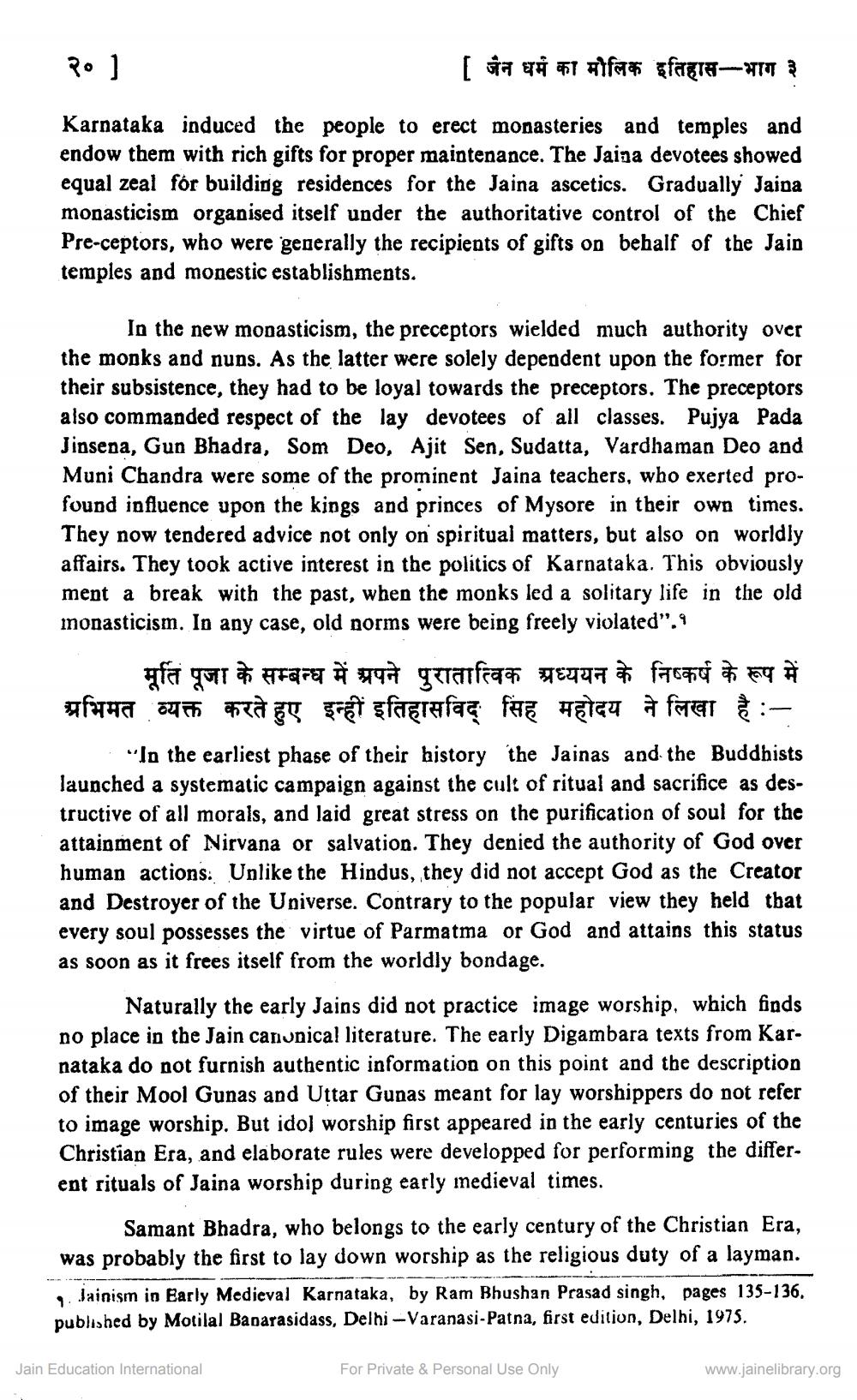________________
२०]
[ जैन धर्म का मौलिक इतिहास - भाग ३
Karnataka induced the people to erect monasteries and temples and endow them with rich gifts for proper maintenance. The Jaina devotees showed equal zeal for building residences for the Jaina ascetics. Gradually Jaina monasticism organised itself under the authoritative control of the Chief Pre-ceptors, who were generally the recipients of gifts on behalf of the Jain temples and monestic establishments.
In the new monasticism, the preceptors wielded much authority over the monks and nuns. As the latter were solely dependent upon the former for their subsistence, they had to be loyal towards the preceptors. The preceptors also commanded respect of the lay devotees of all classes. Pujya Pada Jinsena, Gun Bhadra, Som Deo, Ajit Sen, Sudatta, Vardhaman Deo and Muni Chandra were some of the prominent Jaina teachers, who exerted profound influence upon the kings and princes of Mysore in their own times. They now tendered advice not only on spiritual matters, but also on worldly affairs. They took active interest in the politics of Karnataka. This obviously ment a break with the past, when the monks led a solitary life in the old monasticism. In any case, old norms were being freely violated".
मूर्ति पूजा के सम्बन्ध में अपने पुरातात्विक अध्ययन के निष्कर्ष के रूप में अभिमत व्यक्त करते हुए इन्हीं इतिहासविद् सिंह महोदय ने लिखा है :
"In the earliest phase of their history the Jainas and the Buddhists launched a systematic campaign against the cult of ritual and sacrifice as destructive of all morals, and laid great stress on the purification of soul for the attainment of Nirvana or salvation. They denied the authority of God over human actions. Unlike the Hindus, they did not accept God as the Creator and Destroyer of the Universe. Contrary to the popular view they held that every soul possesses the virtue of Parmatma or God and attains this status as soon as it frees itself from the worldly bondage.
:
Naturally the early Jains did not practice image worship, which finds no place in the Jain canonical literature. The early Digambara texts from Karnataka do not furnish authentic information on this point and the description of their Mool Gunas and Uttar Gunas meant for lay worshippers do not refer to image worship. But idol worship first appeared in the early centuries of the Christian Era, and elaborate rules were developped for performing the different rituals of Jaina worship during early medieval times.
Samant Bhadra, who belongs to the early century of the Christian Era, was probably the first to lay down worship as the religious duty of a layman. 9 Jainism in Early Medieval Karnataka, by Ram Bhushan Prasad singh, pages 135-136. published by Motilal Banarasidass, Delhi -Varanasi-Patna, first edition, Delhi, 1975.
Jain Education International
For Private & Personal Use Only
www.jainelibrary.org




